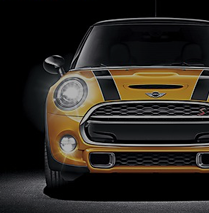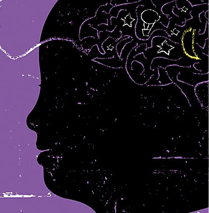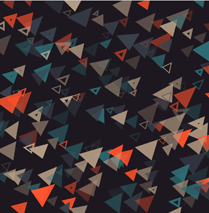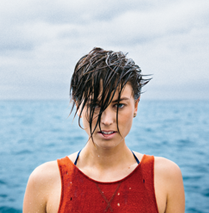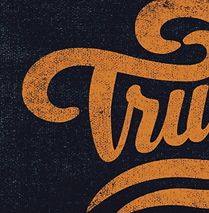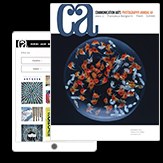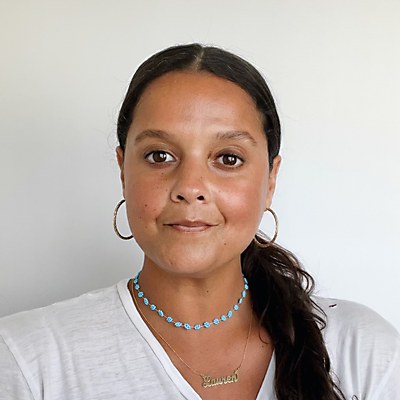How did you get started in digital and interactive design and learn the necessary skills? Pragmatic by nature, I stumbled upon a career in technology by chance. I’ve always been passionate about the power of storytelling and human interaction, so I majored in communications at the Universidad de Montevideo in Montevideo, Uruguay. One of my professors was the cofounder of creative innovation firm The Electric Factory; after graduation, he thought my problem-solving skills and creative mindset would be a good match to the company’s culture. Back then, I was an account manager at a PR firm for tech companies such as Microsoft, so even though I was somehow related to the industry, I wasn’t really a part of it.
When I started at The Electric Factory as a digital production account manager, Flash and rich media banners were the hottest things out there. We’ve always been obsessed with attention to detail and beautifully crafted user experiences, so it was a great onboarding experience to work alongside a great team of likeminded people that always go the extra mile to push forward cutting-edge creative, tech and design.
What do you do as managing director of The Electric Factory? I oversee our daily operations and work alongside our chief executive officer and board of directors, ensuring that we’re combining strategic thinking, creative design and technology to craft impactful experiences for our clients.
We believe in shaping the future by means of electric ideas. The Electric Factory was founded with the belief that great ideas are conceived from a deep understanding of human behavior; therefore, we are always innovating in our field and expanding our capabilities in a digitally enabled world.
We consider ourselves to be a new type of expert. We’re dynamic, multidisciplinary and worldbuilding—in this world as well as the digital.
Many big brands like Amazon and Netflix have tapped The Electric Factory to create immersive digital experiences in the metaverse. What would you consider to be the hallmarks of effective metaverse experiences, and how do you see the metaverse evolving from where it is now? The metaverse is nothing less than the future of computing, and while the term metaverse may eventually go way, spatial and immersive communication is here to stay.
I don‘t think I can give the formula for a successful metaverse experience, but as in every project we lead, user experience is key. We’re a tech-agnostic company, so we’ll always push for the platform that we consider the best fit for our client’s needs that will also give the best possible experience to its audience. We help brands approach their immersive tech projects with a strategic mindset, creating experiences that not only let them step into this new way of interaction but also generate valuable insights for the future.
I’m intrigued by The Electric Factory’s project to promote Netflix’s TV show The Sandman in which you created AI-generated lullabies to promote good dreams. How did the campaign work, and what insights into AI technology and experiential campaigns did you glean from it? Netflix came to us looking for a way to promote the launch of The Sandman, a powerful fantasy series about the personification of dreams. Right from the start, we knew we wanted our audience not only to watch the series, but to interact with it in their dreams too! Since none of our team had mind-bending powers, we had to find a way of using technology to make this possible.
Research told us that our interactions before we fall asleep can influence the way we dream, so we decided to lean into this insight to create our experience. We used AI to compose eleven relaxing lullabies and meditative videos based on the scripts and visuals from all eleven episodes of the series. Then, we brought The Sandman to life as an Alexa Skill and encouraged people to talk to him before going to bed. By running their conversations through sentiment analysis software, The Sandman could choose the best lullaby to play to them based on their current mood: helping them drift off peacefully into the dreaming world.
Our innovative approach to the brief gave The Sandman’s audience a unique, highly personal way of interacting with the show while generating significant media coverage and even a Webby.
What have been some of your favorite projects you’ve worked on at The Electric Factory, and what breakthroughs did you achieve with them? Aside from The Sandman, one of my favorite projects was a collaboration we did with Snap Inc., the company behind Snapchat, for the Children’s Hospital of Los Angeles. Snapchat asked us to develop a prototype that would help children recover from surgery faster by getting them active sooner. So, we transformed a hospital room into an urban jungle with AR.
Repeatedly moving your arm two centimeters back and forth might improve your recovery time, but as any child will tell you, it’s not fun. And that’s a problem, because fun is what children do best. But in a small three-by-three-meter (96 sq. ft.) hospital room where the most important thing at all times was keeping the kids safe, how were we going to turn the hospital into a real adventure for them?
Using the magic of AR, we created a game set in a papercraft-inspired urban jungle where every level was designed to activate a different part of a patient’s body, whether walking a few steps to water a flower or raising an arm to welcome the sun. So, the more the children played, the better their mobility would become, significantly improving their recovery time.
As AR is still a nascent medium in digital design, how do you predict it will grow in the future? What clients will find the most use in it, and why? I honestly believe the future is augmented. We’ll all use this technology some way or another on a daily basis. If it’s just for entertainment or to help us get from point A to point B or streamline our online shopping, AR will only keep getting better and more present in our lives.
In the realm of new media, whose work do you love and look toward for inspiration? Creators are always a great source of inspiration! I’m always amazed by the content being created for short-form videos on Instagram or TikTok and how people react to them. However, being a little bit of a bookworm myself, books have always been my greatest source of inspiration. The possibilities are endless when it comes to creating whatever image, aesthetic and artistry you may think of when reading.
What emergent technologies and innovations will have the biggest impact on how you design in the next few years? I wish I had something more groundbreaking to say here, but AI will definitely continue to impact our industry for years to come. AI tools can be extremely useful for designers and creatives, enabling them to boost efficiency and productivity while focusing on their artistry and strategic understanding of their clients’ briefs and needs. If you work in the creative or design industry, you’ve probably participated in a conversation or two—or thousands—about how AI will impact our work. And while the impact will be enormous and far reaching, the essence of creative expression through technology is a skill that transcends skills and media. So, embrace it, and go for it!
Do you have any advice for young creatives just entering the field? It’s simple. Always have a never-ending curiosity about absolutely everything in life and a test and learn mindset so you can learn as much as you can by trial and error. ca


